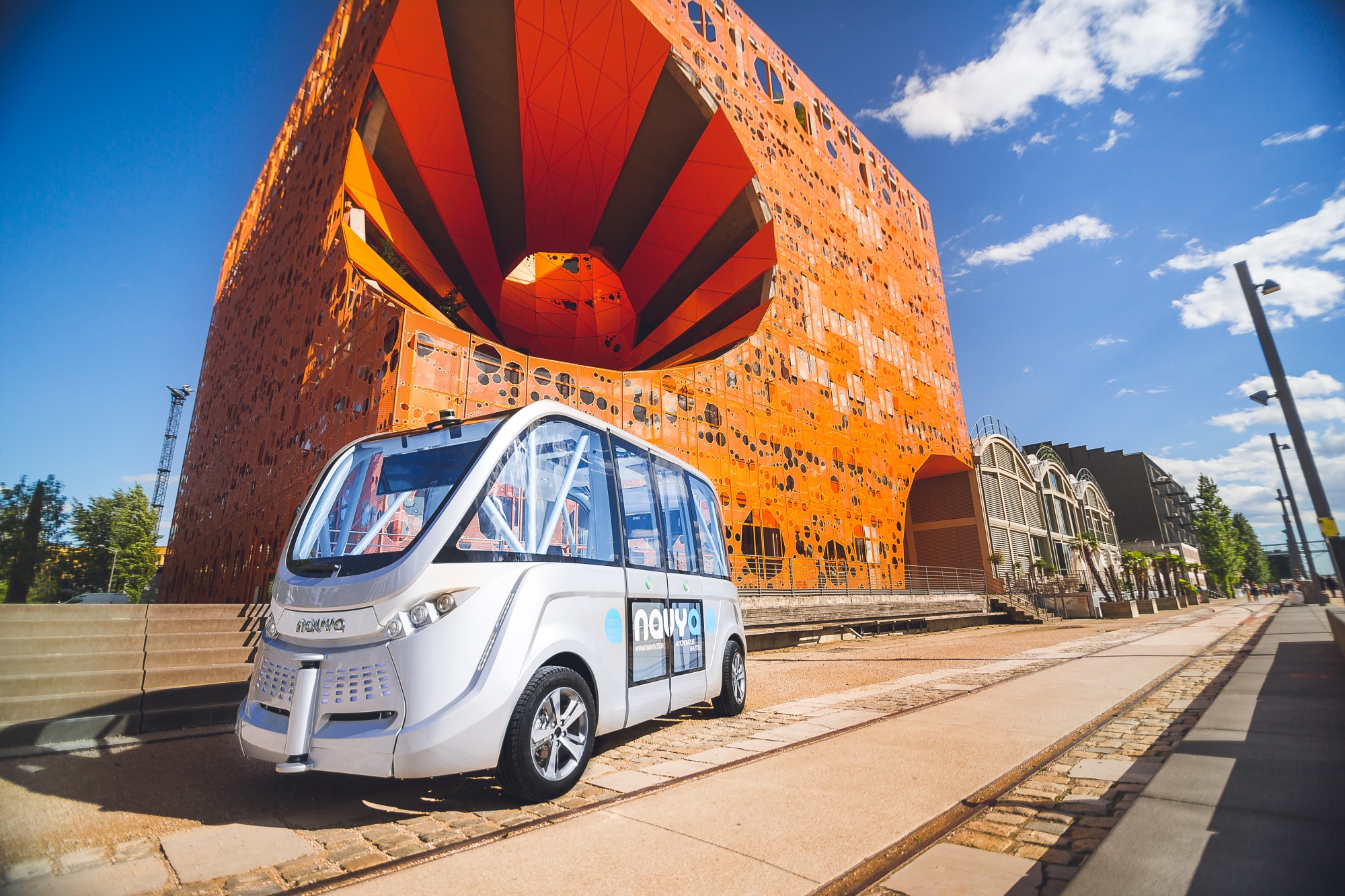
Navya Driverless Shuttle Bus, Lyon. Photo: Navya-Technology.com
They may have a top speed of under 50 kilometres per hour, but driverless buses are moving into the fast lane of transport innovation. In recent months, cities around the world have been trialling automated bus services:
- Driverless buses constructed by French technology firm Navya have started appearing on the roads of France, Switzerland, and Australia.
- The “WePod”, developed by Delft Technical University has been carrying passengers to, from and around the campus of Wageningen University & Research centre in the Netherlands.
Auto-mobility
While Google have been grabbing most of the headlines to do with driverless vehicles, the French technology firm of Navya has been designing and producing autonomous cars since 2014. In October 2015, Navya launched its ARMA bus.
The ARMA does not require any driver or specific infrastructure, and has onboard sensors to avoid collisions. The electrically-powered vehicle is also environmentally friendly; its batteries can last from 5 to 13 hours, depending on the configuration and the traffic conditions.
The ARMA buses are not designed to replace mass-transit networks. With a capacity of no more than 15 passengers and speeds of no greater than 50 km per hour, the ARMA buses are designed to cover short distances, following distinct routes that avoid heavy traffic. However, they could prove ideal for locations such as airports and conference centres. Since the beginning of September, the ARMA buses have been carrying passengers on ten-minute journeys through the futuristic Confluence district of Lyon. And Navya shuttle buses are also ferrying workers and visitors around the EDF power plant in Civaux, The driverless service replaced a diesel bus, cutting waiting time down from 15 to 5 minutes. EDF estimates the time savings could result in as much as 3 million euros’ worth of extra productivity.

Navya Driverless Shuttle Bus,EDF, Civaux. Photo: Navya-Technology.com
Going Dutch
Driverless buses called “WePods” have taken to the public roads as part of a pilot project in the Dutch province of Gelderland.
The project managers see numerous possibilities for the autonomous vehicles, such as on-demand pick-up services, filling public transport gaps in rural areas and provision of garbage collections. Ultimately, driverless buses could help solve urban parking problems and increase road capacity. And because around 70% of public transport costs are due to personnel costs, the WEpods could also save transport authorities money.
Addressing concerns
Naturally, concerns have been raised about the safety of driverless vehicles. The truth is that no type of transport is 100% safe. Even though driverless vehicles have sensors, cameras, radar and lasers to prevent collisions, accidents caused by human-driven vehicles will still happen.
However, the designers of driverless vehicles are adopting a safety-first culture. In many of the vehicles, data is stored in the equivalent of an aircraft’s “black box”, enabling lessons to be learned from incidents taking place during the journey.
Fast forward
The trend towards driverless buses shows no sign of slowing down. In 2015, a self-driving bus took passengers on a 20-mile journey through the Chinese city of Zhengzhou. In Kista, north-west of Stockholm, members of the public were invited to test-ride driverless buses as part of the town’s April 2016 mobility week. And in August 2016, trials of automated buses took place in the Finnish capital of Helsinki.
With regard to automated transport, it seems that the stuff of science fiction is fast becoming a matter of fact.
If you’ve enjoyed this blog post, you might also like some of our other posts focusing on transport:
Share
Related Posts
With information now so accessible, it’s easy to assume that whenever you have a question you can simply tap it into a search engine. But, while the internet and digital search tools are undoubtedly useful for checking basic facts, when ....
By Ian Babelon A new-old concept for proximity “Are we there yet?” Parents may patiently nod to their children’s insistent nudges on a 20-minute journey to… somewhere. Quite rightly, researchers have asked: twenty minutes to what? The answer may well ....
By Hannah Brunton UNESCO’s Global Media and Information Literacy Week 2022 takes place from 24-31 October 2022 under the theme of “Nurturing Trust”, giving governments, educators, information professionals, and media professionals the chance to discuss and reflect on critical issues ....
The World Health Organisation (WHO) has estimated that over 1 billion people are living with some form of disability worldwide – that’s about 15% of the world’s total population. And, with trends in life expectancy and the prevalence of chronic ....
